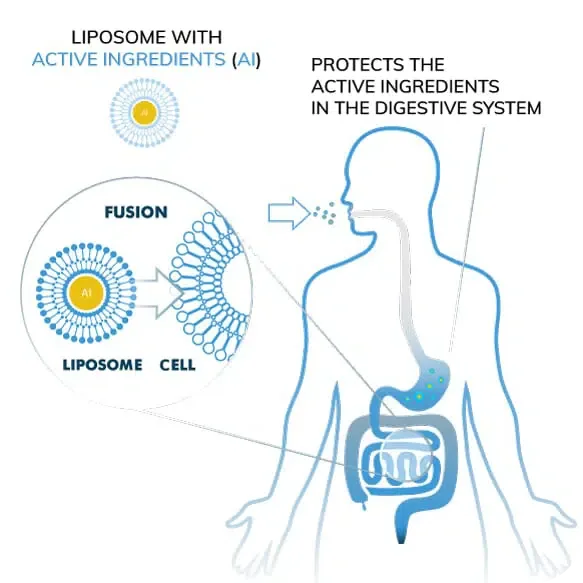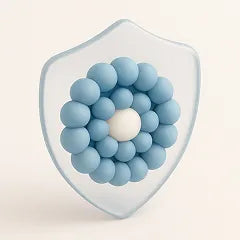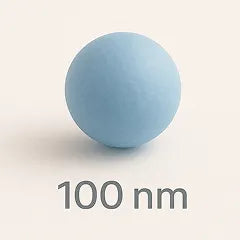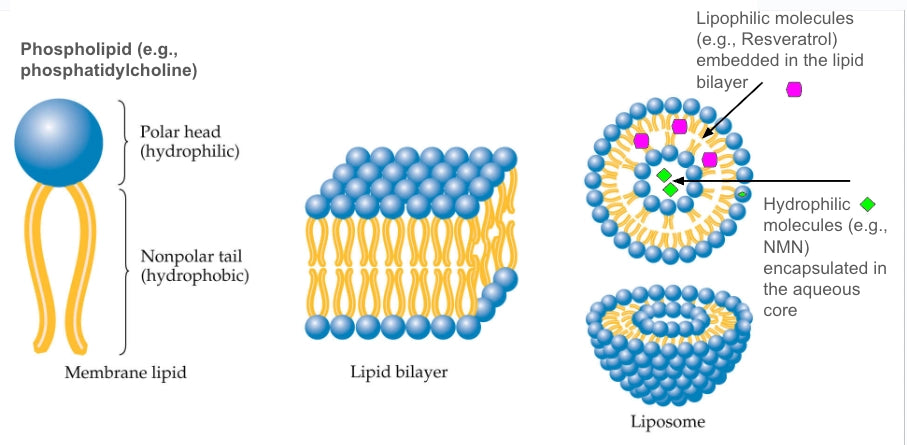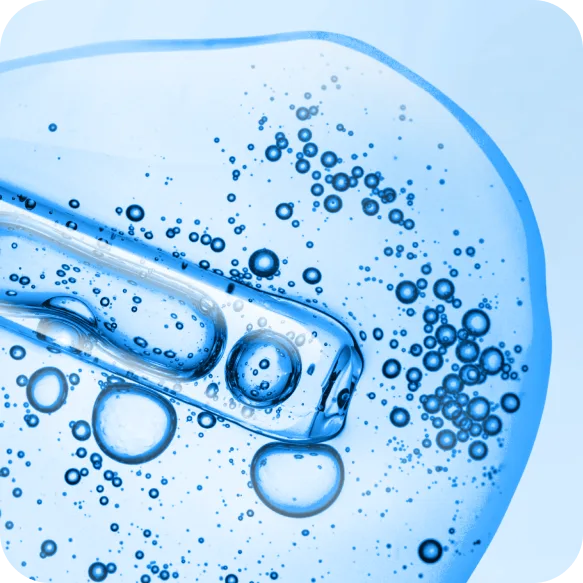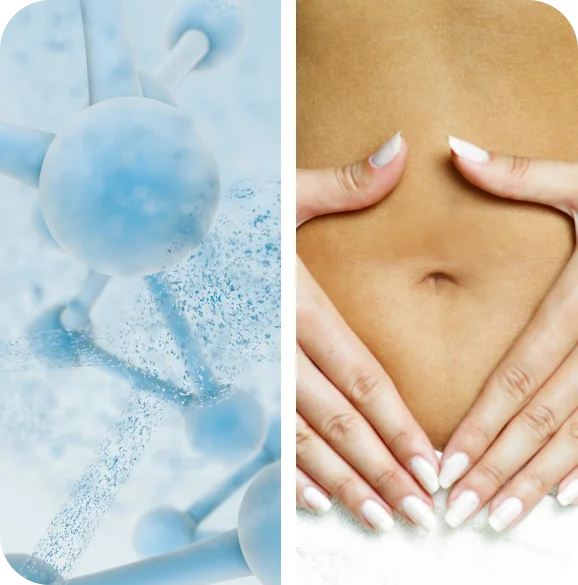Bioavailability Issues
Solving Poor Bioavailability with Liposomal Delivery
Enhanced Delivery
Liposomal delivery offers a targeted and nearly complete absorption of active ingredients with a delayed‑release effect, unlike other nutrient delivery methods. This increased circulation time of specific nutrients in the bloodstream significantly increases bioavailability. The higher the bioavailability of an active compound, the greater effect it has on the body. (3)
Understanding Liposomes
The encapsulation of hydrophilic or hydrophobic nutrients within liposomes, such as NMN, allows the active ingredient to bypass the destructive elements of the gastric system, improving its oral bioavailability and increasing peak plasma concentration. (9)
Liposomes Demonstration
Liposomes Demonstration
Why Liposomes?
Biovailability Issues

Liposomes Demonstration

Why Liposomes?

Biovailability Issues
Key Advantages of Liposomal Delivery
Protects against the harsh environment of the GI tract and increases transmucosal (oral) uptake and absorption.
Optimizes bioavailability of both hydrophilic and hydrophobic, unstable compounds.
Timing of the dose intake does not require accompaniment or exclusion of food as liposomal absorption avoids the digestive processes.

Provides a larger nutrient payload per particle.
Offers higher bioavailability and absorption compared to conventional capsules.
Increases peak plasma concentration of encapsulated nutrients.
DIGESTED, METABOLIZED & DEGRADED
“Oral NR dosing increased circulating NAM ~40-fold while NMN remained unchanged and NR was detected only at trace levels in the blood.”
“Thus, the majority of the orally administered NR that reaches the muscle appears to enter in the form of liberated NAM or as NMN.” (15)

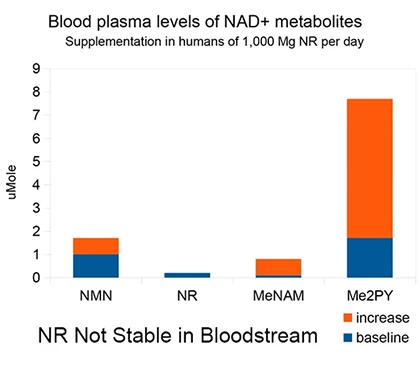
DIGESTED BY GUT BACTERIA - NAD+ PRECURSORS ARE MOSTLY DIGESTED IN THE INTESTINES, WITH RESEARCH POINTING TO BACTERIA AS VORACIOUS CONSUMERS.
(The chart above shows huge increase in NMN after antibiotics.)

Study Results
- NR quickly degraded in bloodstream – NR has an even bigger bio-availabilty problem than NMN and NAD+. It is very unstable in the bloodstream, so it is never found at more than trace levels. (16)
- Even supplementation of 1,000 mg a day of NR in humans does not increase NR levels in the blood. (click to learn more)
- Digested by enzymes in intestines – “Dietary NAD was hydrolyzed primarily in the small intestine…to NMN… was rapidly hydrolized to NR… and NR more slowly to NAM.” (17)
- Metabolized to NAM in Liver – Any that makes it past the gauntlet of the GI tract to the liver get mostly metabolized to the less effective Nicotinamide (NAM) before being excreted to the bloodstream. (18)
Quotes From Research
“Unlike in cell culture where NR and NMN are readily incorporated into NAD, oral administration fails to deliver NR or NMN to tissues.”
“Interestingly, we found that neither compound was able to enter the circulation intact in substantial quantities when delivered orally.”
“Orally delivered NR and NMN are converted into NAM before reaching the systemic circulation.” (19)
